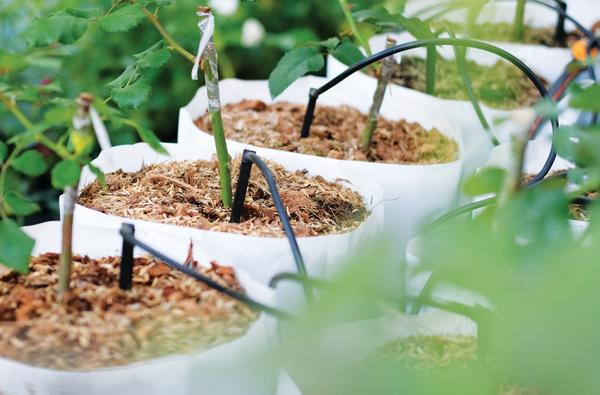In today’s world, every dollar you invest in your growing business needs to deliver the returns you expect. With inefficient or ineffective water-soluble fertilizer (WSF) products or applications, losses are multiple. Leached excess nutrients mean wasted product, reduced profits, negative environmental impact, and inconsistent quality in crops those nutrients were meant to feed.
By using water-soluble fertilizer products efficiently and effectively, essential nutrients hit their target—and your investment hits its target, too. These five steps can help you optimize nutrient uptake in your water-soluble program, reduce waste, and maximize financial return:
1. Product selection
Adding unnecessary nutrients won’t grow a better crop. But it will increase your production costs and the likelihood of nutrient leaching. Choosing the best water-soluble product for your crops starts with understanding the specific nutrient needs of the plants you grow—and the nutrients contributed by your irrigation water and growing media. (If you’re uncertain about those contributions, ICL Lab Services can help.)
With that information in hand, focus on a fertilizer program to fill the gaps—not add what’s already present. Always choose your product based on nutrient content, not product marketing or crop names on the bag. Depending on your irrigation water or media, crop-specific fertilizers may not provide everything your crop need.
2. Rate selection
Product label rates provide a starting point. But there’s no universal standard for “medium” or “high.” Many cultural and environmental factors impact the efficacy of a fertilizer application. An optimal water-soluble program builds on label guidelines to customize rates for your growing systems.
Depending on your operation, optimization may mean more or less WSF than you expect. Higher than optimal rates stress crops and waste product and labor. Lower than optimal rates reduce quality and extend production cycles. That means less available space, more inputs, and more labor before plants leave your place.
Talk with your ICL territory manager about on-site trials to identify optimal WSF rates for your conditions. Proper rate selection will help you lower costs and minimize nutrient leaching. With our Peters Product and Rate Finder app, you can find product recommendations, application rates, local dealers, and expert WSF advice.
3. Application method
The way you apply your WSF impacts its effectiveness. Unless fertilizer makes it to the root zone, there’s a good chance it ends up as run-off instead.
Applications through overhead sprinklers can be highly inefficient. Studies show that, depending on your spacing, more than 75% of droplets may completely miss plants. Even hand watering applications can be wasteful. In some cases, more than 60% percent of WSF solutions can be lost as wands are moved from pot to pot.
Systems that direct nutrient solutions right to the root zone, such as drip systems, can reduce the total volume of nutrient solution you apply and the volume you waste through run-off.
4. Irrigation volumes
Nutrients in the root zone move with water. Excess irrigation water moves nutrients out of the pot. Make the most efficient use of your WSF with cycle times that irrigate crops to container capacity without significant drainage.
While some growers still advocate doing clear-water leaches, this practice washes useful nutrients out of the pot. Maintain root zone EC at acceptable levels. If EC levels are rising, cut back on the applied concentration.
If you’re a wet grower, move toward dry growing to help save water and nutrients. By reducing the amount of applied solution leached from drainage holes, you can lower your total amount of fertilizer and minimize nutrient waste.
5. Growing systems
Incorporating systems and practices that improve nutrient conservation helps boost your bottom line. For example, contained systems such as flood floors or capture-and-recycle water reclamation systems help save money and protect the environment, too. Simply calibrating and maintaining fertigation systems regularly helps ensure they deliver your desired nutrient output.
Growing media selection also impacts WSF effectiveness. Soilless media with a high bark percentage typically doesn’t hold nutrients well. Open, well-drained mixes made from bark and sand are more easily leached. By adopting a tighter medium with greater water-holding capacity—such as peat, rice hulls, coir, or vermiculite—you can conserve and save on irrigation and nutrients.
Here at ICL, we believe that sustainability and environmental stewardship help grow businesses as well as plants. Peters water-soluble fertilizers set the world standard for purity, solubility, and effectiveness in plant nutrition. Our local specialists can help you optimize your water-soluble fertilizer program to feed effectively and efficiently. So, give us a call. Let’s talk about your crops, your growing operation, and products and practices to help you succeed.
These five steps to efficient, effective water-soluble feeding can help you optimize your WSF program, reduce waste, and maximize financial return.
